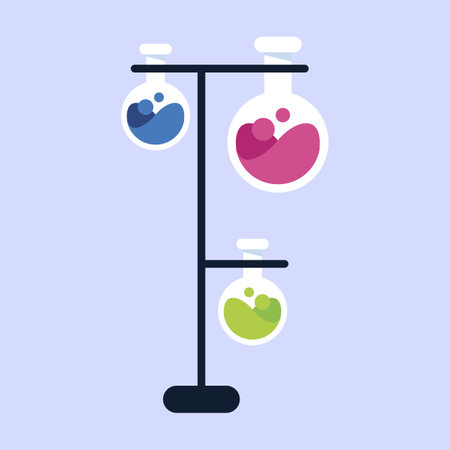Understanding Baby Bird Nutrition
When it comes to caring for baby birds, understanding their nutritional needs is the first and most important step. Just like human babies, young birds require specific nutrients to grow strong and healthy. The dietary requirements of baby birds can vary greatly depending on their species—whether they are songbirds, parrots, pigeons, or waterfowl, each has unique needs that must be met for proper development. For example, some baby birds are insectivores, needing a high-protein diet of insects and grubs, while others may thrive on seeds, fruits, or even specialized formulas.
Proper nutrition during these early stages is crucial for bone growth, feather development, and a strong immune system. Without the right balance of proteins, fats, vitamins, and minerals, baby birds can develop health problems that may affect them throughout their lives. In the wild, parent birds instinctively know what to feed their chicks—but when you’re hand-raising a baby bird or helping a rescued nestling, it’s important to mimic this natural diet as closely as possible.
Understanding these differences and why proper nutrition matters will set the foundation for successfully feeding baby birds and ensuring they grow into thriving adults. In the following sections, we’ll break down how to identify your baby bird’s species and dietary needs so you can provide the best care possible right from the start.
2. Identifying the Age and Species of the Baby Bird
Before you start feeding a baby bird, it’s essential to know its species and age. This helps ensure that you provide the right nutrition and feeding schedule, as different birds and growth stages have unique dietary needs. Here are some practical tips for identifying your feathered guest:
Tips for Recognizing Species
- Observe Physical Features: Look at beak shape, feather color, and size. For example, songbirds often have slender beaks while doves have a softer, fleshier beak.
- Listen for Sounds: Some species have distinctive calls even as chicks. Try matching their peeps or chirps with online recordings.
- Check Local Bird Guides: Compare the baby bird with images in a local field guide or reputable websites focused on North American birds.
- Note Habitat: Where you found the bird can give clues—woodlands, gardens, or near water all suggest different likely species.
Determining Growth Stage
| Growth Stage | Description | Feeding Frequency | Food Type |
|---|---|---|---|
| Hatchling | Naked, eyes closed, very fragile | Every 15-20 minutes (dawn to dusk) | Easily digestible formula or soaked food mash |
| Nestling | Partial feathers, eyes open, remains in nest | Every 30-45 minutes (dawn to dusk) | Semi-solid foods; begin introducing small insects if insectivore species |
| Fledgling | Mostly feathered, hopping but not flying well | Every 1-2 hours (dawn to dusk) | Softer version of adult diet; chopped fruits, seeds, or insects depending on species |
Why It Matters
The right identification means you’ll avoid overfeeding or underfeeding and will offer foods that mimic what the parents would provide in nature. For example, a tiny finch hatchling needs more frequent feedings of soft food compared to a fledgling robin that is starting to sample adult fare.
Pro Tip: When in Doubt…
If you’re unsure about the species or stage, reach out to a local wildlife rehabilitator or avian vet before starting any feeding regimen. They can help ensure your little guest gets exactly what it needs to thrive.

3. Gathering the Right Supplies
Before you begin feeding baby birds, it’s essential to gather all the necessary supplies to ensure a safe and nurturing experience. Proper equipment helps you deliver the right nutrition while minimizing stress for both you and your feathered friend. Here’s a quick guide to what you’ll need:
Essential Feeding Tools
- Syringes or Pipettes: These are vital for delivering precise amounts of food directly into the baby bird’s beak. Choose a small, easy-to-handle syringe with no needle.
- Feeding Spoons: Specially designed spoons with rounded edges can be used for older chicks who start pecking on their own.
- Small Bowls or Cups: Use these to mix and hold formula at the correct temperature during feeding time.
Safety and Hygiene Equipment
- Disposable Gloves: Protects both you and the bird from germs—especially important since baby birds have sensitive immune systems.
- Paper Towels or Soft Cloths: For cleaning up spills and keeping your feeding area tidy.
Choosing Safe Materials
Avoid any tools made from materials that could splinter, rust, or have sharp edges. Stainless steel, BPA-free plastics, or silicone are preferred choices for feeding tools in American homes because they are durable and easy to sanitize.
Getting Ready Before Feeding
Have everything within arm’s reach before you bring out your little nestling. Organizing your supplies ahead of time prevents unnecessary delays and helps keep the process smooth, safe, and cozy—just like life on a peaceful country homestead surrounded by curious pets eager to help!
4. Preparing Safe and Nutritious Food
When it comes to feeding baby birds, ensuring their meals are both safe and nutritious is vital for healthy growth. Whether you choose a high-quality commercial formula or decide to make your own at home, the key is to meet the specific nutritional needs of your feathered friends. Below youll find step-by-step instructions for mixing food that can help your baby birds thrive.
Choosing Between Homemade and Commercial Formula
For most backyard bird parents in the U.S., commercially prepared formulas such as Kaytee Exact or ZuPreem offer convenience and scientifically balanced nutrition. However, homemade options can work in a pinch, provided you follow trusted recipes and guidelines from avian veterinarians or wildlife rehabilitators.
Mixing Instructions
| Type of Formula | Ingredients Needed | Mixing Ratio | Preparation Tips |
|---|---|---|---|
| Commercial Formula | Formula powder, Warm filtered water | Follow label (usually 1 part powder : 2-3 parts water) | Stir until smooth, no lumps; ensure temperature is 102-106°F before feeding |
| Homemade Formula (Emergency) | Boiled egg yolk, baby rice cereal, applesauce (unsweetened), vitamins (if available) | 1 boiled yolk : 2 tbsp cereal : 1 tbsp applesauce : pinch of vitamins (add warm water to get pudding-like consistency) |
Mix just before use; discard leftovers after each feeding; do not use long-term without vet advice |
Important Safety Reminders
- Avoid cow’s milk, bread, or dog/cat food: These common kitchen staples can be harmful to baby birds.
- Always use freshly prepared food: Bacteria multiply quickly in moist formulas; never save leftovers for next feedings.
- Test temperature before feeding: Dip a clean finger or thermometer into the mix—food should feel very warm but not hot.
- Clean all utensils thoroughly: Wash syringes, spoons, and bowls with hot soapy water after every meal to prevent infections.
The right formula and careful preparation will go a long way toward giving your little flock a strong start in life. Stay tuned for more tips on feeding schedules and hand-feeding techniques in the next section!
5. Proper Feeding Techniques
Step-by-Step Advice for Feeding Baby Birds
Ensuring your baby birds get the right nutrition is just as important as how you feed them. Let’s walk through a step-by-step approach to proper feeding techniques that not only keep your feathered babies healthy, but also make the process smooth and safe for both of you.
Bathing Before Feeding
Before each feeding session, wash your hands thoroughly with soap and warm water. This helps prevent the spread of bacteria and keeps the food preparation area clean. If your baby birds are old enough, gently wipe their beaks and faces with a warm, damp cloth to remove any leftover formula or debris from previous feedings.
Feeding Frequency and Scheduling
Baby birds have fast metabolisms and need to be fed frequently. Newly hatched chicks may require feeding every 20–30 minutes from sunrise to sunset. As they grow older, you can gradually reduce feedings to every 2–3 hours. Always avoid overnight feedings unless advised by a veterinarian, as most species rest at night.
Portion Size Control
It’s crucial not to overfeed or underfeed your baby birds. Use a small syringe or dropper to offer the formula slowly, allowing the chick to swallow naturally before giving more. A general rule is to fill the crop (the pouch in their neck) about three-quarters full—never stuff it completely. Monitor their crop after each meal; it should be slightly full but not stretched tight.
Maintaining Cleanliness During Feedings
Always clean all feeding utensils—such as syringes, droppers, or spoons—with hot soapy water after every use. Sterilize them regularly to prevent bacterial growth. Wipe up any spilled food immediately and change bedding often if formula splatters onto it during feedings. Keeping everything tidy helps prevent illness and encourages healthy development for your little flock.
A Cozy Reminder
Feeding baby birds can feel like a lot of work, but your gentle care makes all the difference in their journey from fragile hatchlings to strong, chirping companions. With each clean meal and careful portion, you’re helping them grow up happy and healthy—just like a true backyard bird-parent!
6. Common Feeding Challenges and Solutions
Reluctant Eaters
It’s not uncommon for baby birds to refuse food, especially in a new environment or after a stressful event. To encourage feeding, try offering smaller amounts more frequently, and make sure the formula is at the right temperature—usually lukewarm. Gently tapping the beak or softly chirping can mimic a parent bird’s cues, helping to stimulate their natural feeding response. If your chick still refuses to eat, check for signs of illness and consult an avian vet as soon as possible.
Overfeeding
Overfeeding is a frequent mistake, especially for first-time caregivers eager to help their feathered friends grow strong. Signs of overfeeding include food spilling from the mouth, labored breathing, or swelling around the crop (the pouch where food is stored before digestion). To prevent this, always follow recommended portion sizes based on species and age. Use a syringe or dropper with clear measurements and allow time between feedings so the crop can empty properly.
Digestive Upsets
Baby birds have sensitive digestive systems that can easily be upset by improper feeding techniques or unsuitable diets. Symptoms like diarrhea, slow crop emptying, or regurgitation may indicate digestive distress. Stick to species-appropriate formulas and keep all feeding tools meticulously clean. If you notice issues, pause solid foods and offer electrolyte solutions until digestion stabilizes. Always seek guidance from an avian specialist if problems persist.
Practical Tips for Smooth Feeding Sessions
- Keep a consistent feeding schedule to build trust and routine.
- Monitor your bird’s weight daily to catch issues early.
- Watch for behavioral cues: content chicks will beg energetically; lethargy signals trouble.
- Record each feeding session, including times and amounts, for reference.
When to Seek Professional Help
If you face persistent challenges like refusal to eat, abnormal droppings, or signs of distress, don’t hesitate to reach out to a local avian veterinarian or wildlife rehabilitator. Early intervention can make all the difference in giving your baby bird the best chance at thriving.
7. When to Call a Wildlife Rehabilitator
Even with the best intentions and care, there are times when a baby bird’s needs exceed what you can provide at home. Knowing when to reach out for professional help is essential to give these tiny creatures their best chance at survival. Here are some key signs that it’s time to contact a licensed wildlife rehabilitator:
Recognizing Warning Signs
- Lethargy or Weakness: If the baby bird is unusually quiet, floppy, or unable to hold its head up, this could signal illness or severe malnutrition.
- Injuries: Open wounds, broken limbs, or visible deformities always require expert attention.
- Breathing Problems: Labored breathing, wheezing, or clicking sounds may indicate respiratory distress.
- Poor Feeding Response: If the chick refuses food or struggles to swallow, it may need specialized care.
- Abnormal Droppings: Runny, discolored, or foul-smelling droppings can point to digestive issues or infections.
Understanding Your Limits
Caring for wild baby birds is rewarding but challenging. Homemade diets and makeshift habitats can only go so far. Licensed wildlife rehabilitators have the experience and resources—like species-specific diets, medical equipment, and knowledge of local bird populations—to provide the best outcome. In many states across the U.S., it’s also the law to transfer injured or orphaned wild birds to certified professionals after initial rescue efforts.
How to Find Help
If you observe any warning signs or feel unsure about your ability to care for a baby bird, don’t hesitate to seek advice. You can find local wildlife rehabilitators through state wildlife agencies, Audubon societies, or even animal control offices. Time is often critical—quick action may make all the difference in saving a little life.
Your Role in Conservation
By recognizing when a situation is beyond your scope and reaching out for help, you’re making a responsible choice for both the bird and your local ecosystem. Every step you take—from proper feeding techniques to knowing when to call in the pros—helps protect America’s feathered friends for generations to come.


